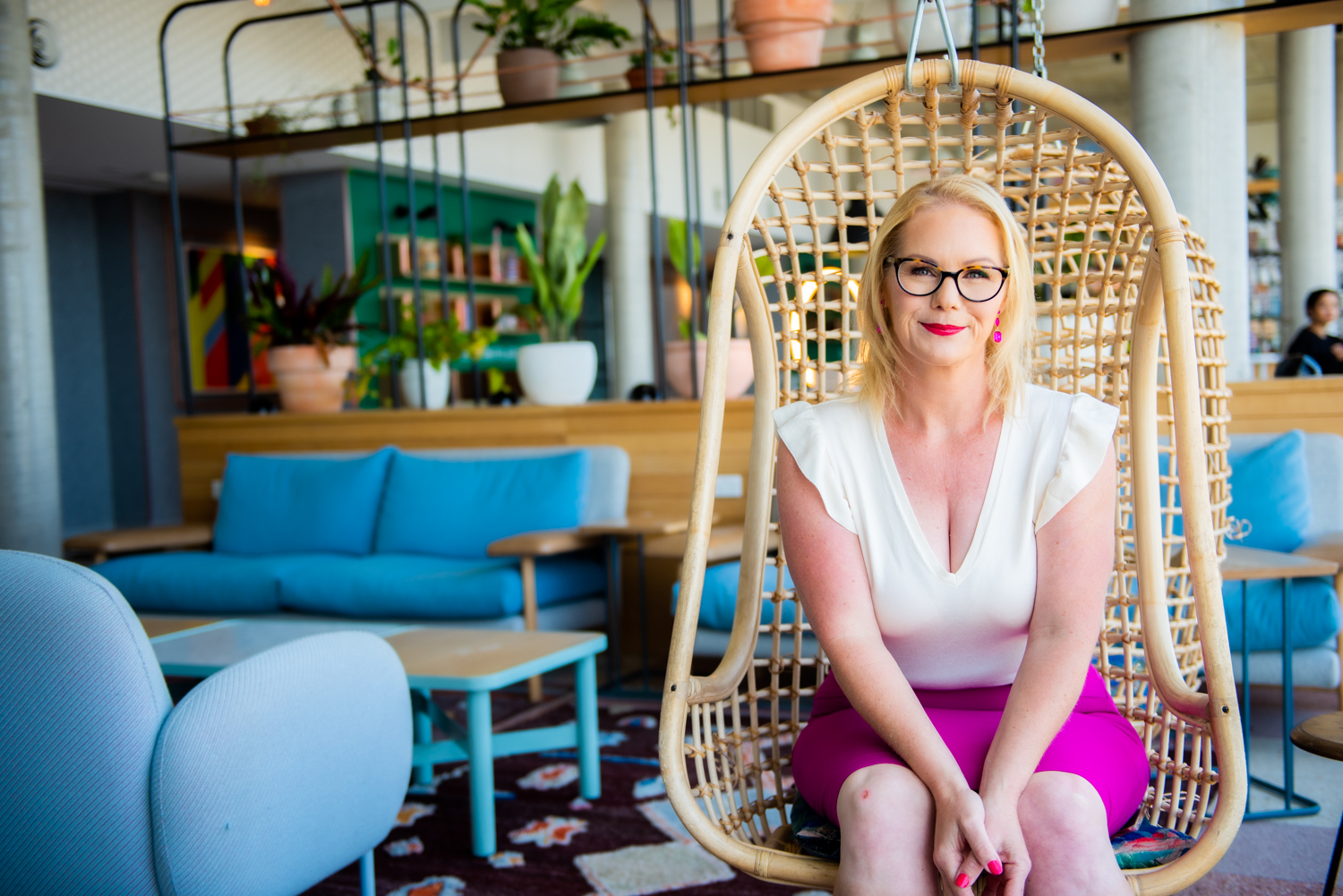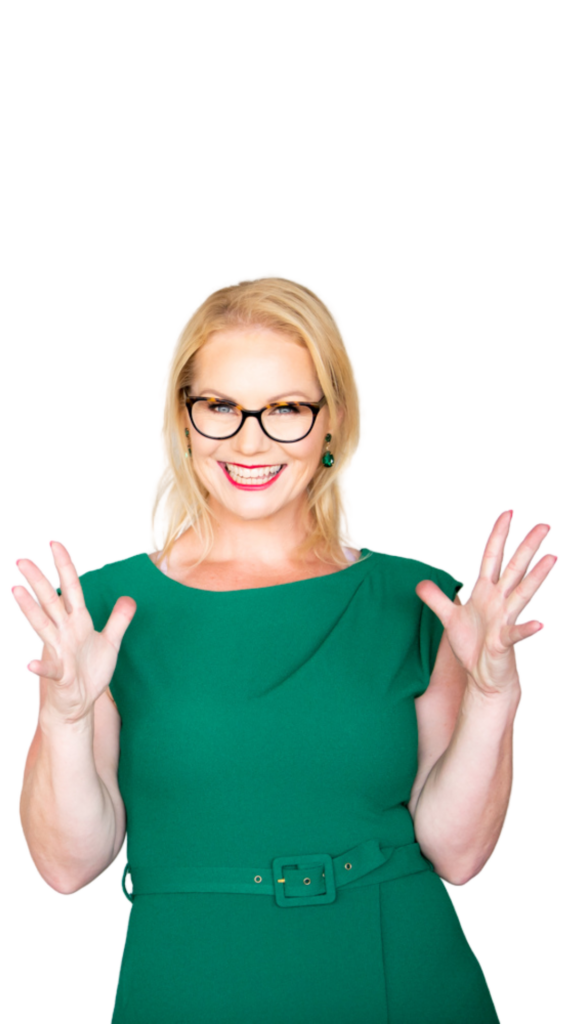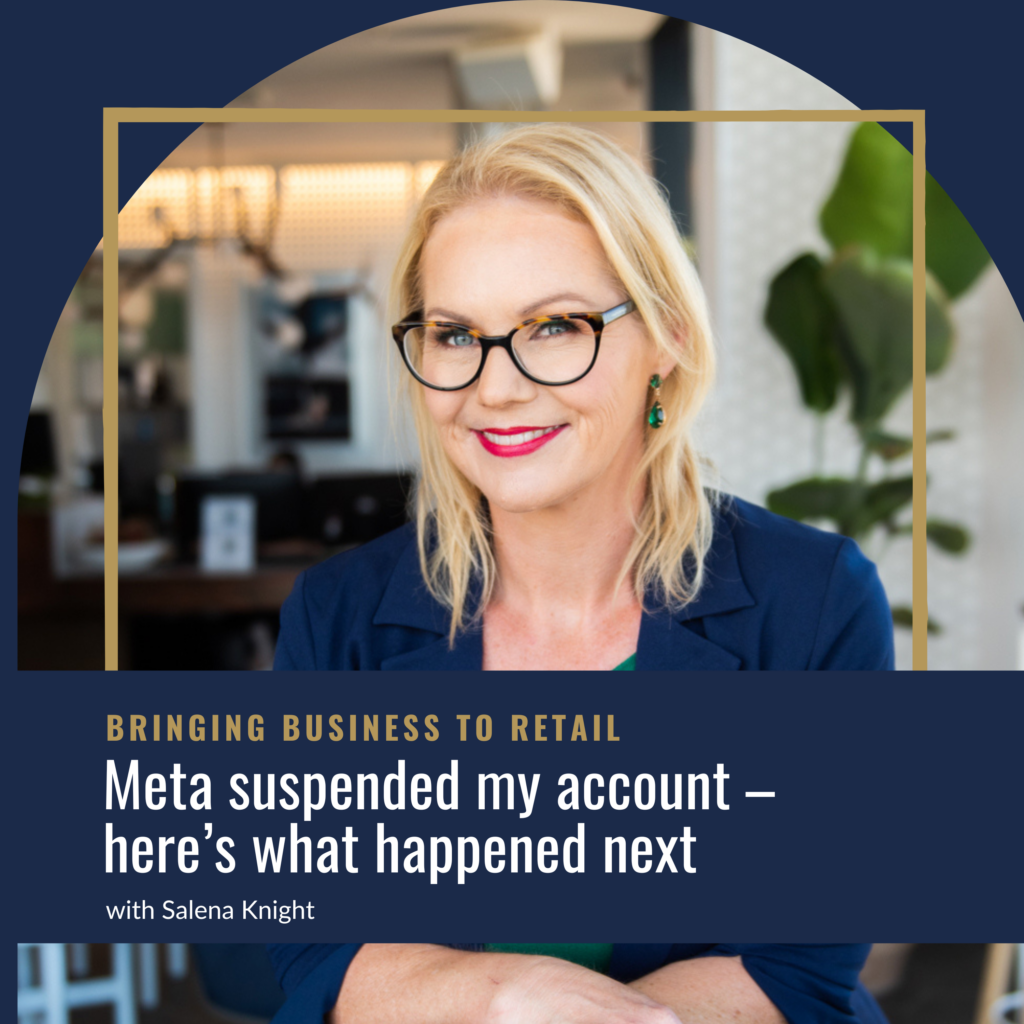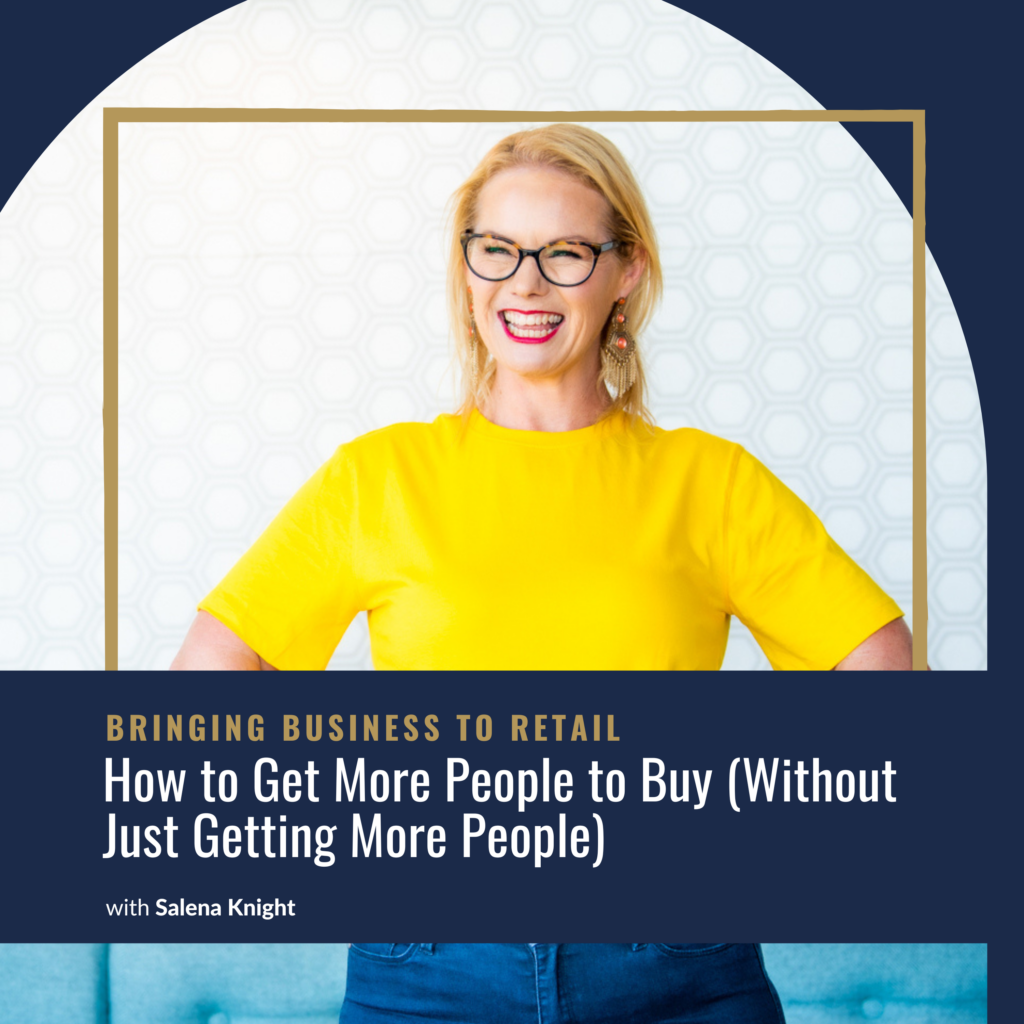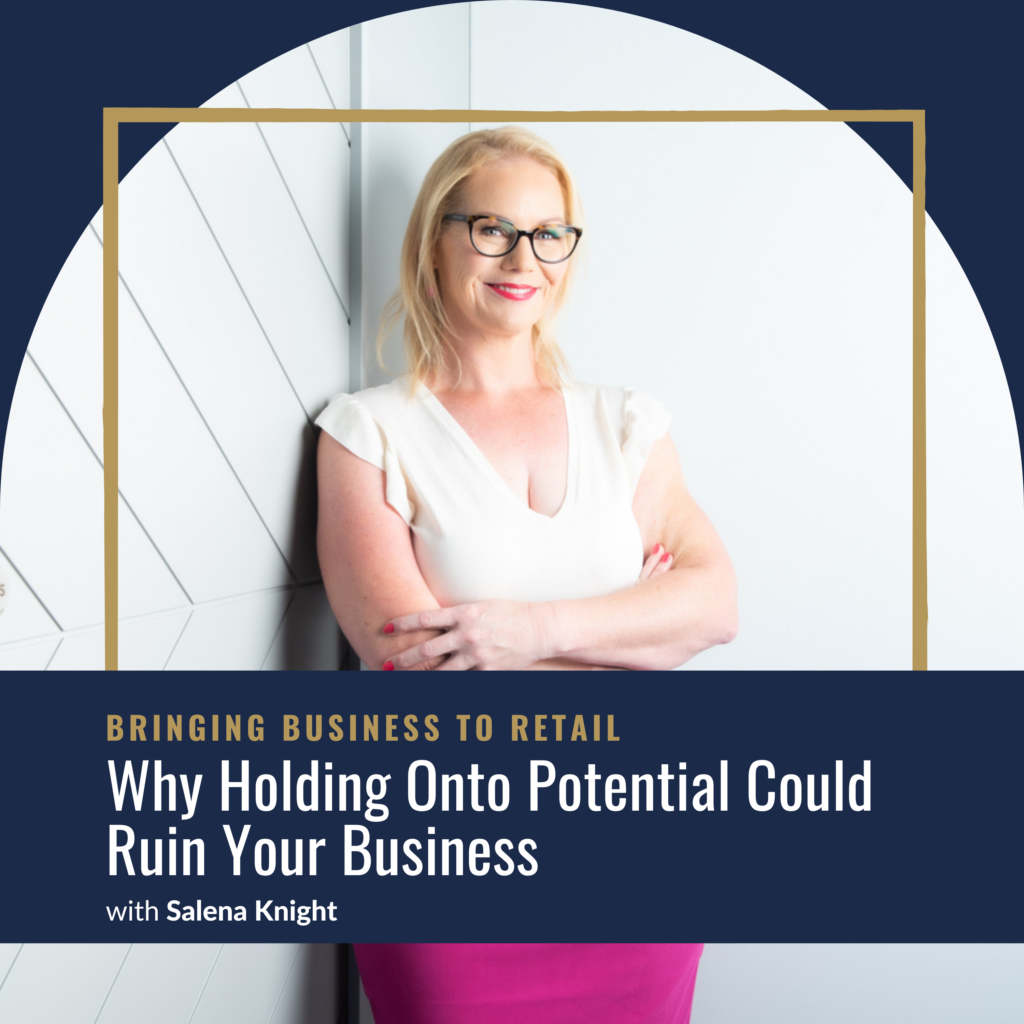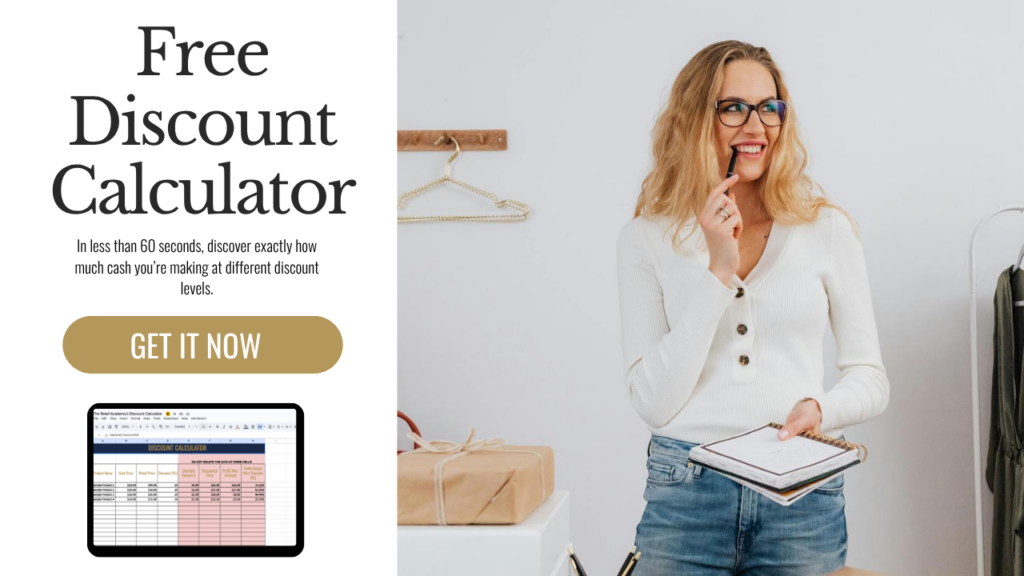
SHOW NOTES
Hey there,
Let me tell you about Eva. She’s got a beautiful boutique, great customers, decent foot traffic—but she’s always stressed. “We’re so busy, Sal,” she’d say, “but there’s never money in the bank.”
Sound familiar?
So I did what I always do—I looked at the numbers. Eva had 1,200 SKUs in her store. Nothing crazy. But 300 of them—that’s 25%—had been sitting there for over six months. Some for over two years.
Those 300 SKUs were costing her nearly $400,000 in tied-up working capital. She was literally paying rent, insurance, and opportunity cost to store products that weren’t selling.
Here’s what blew my mind: one $20 product that you keep turning over can generate $1 million in revenue in just 16 weeks. But that same $20 product sitting on your shelf? It’s costing you millions in lost potential.
Today I’m walking you through the 15-Minute Margin Audit—a simple process to identify your bottom 25% of SKUs and calculate exactly what they’re costing you right now. I’m talking rent per square foot, opportunity cost, insurance, the whole deal.
Look, I get it. We get emotionally attached. Maybe you loved them when you ordered them. Maybe they photograph beautifully. Maybe you’re scared that the moment you clear them out, someone will ask for them.
But here’s the truth: the mistake isn’t buying it. The mistake is keeping it.
So do the audit today. See the number. Make a decision. Because every day you wait is another day you’re paying to hold onto stock that’s working against you.
Grab my Nine Fail-proof Ways to Move Stock at salenaknight.com/stock and let’s turn that inventory into cash.
Sal
LISTEN NOW on The Bringing Business To Retail Podcast
Hey there. As I record this episode, we've just kicked off the Scalia Store Accelerator, the last one for the year, and it's always interesting to see those aha moments where the penny drops and all of a sudden it becomes really clear. Just how easy it can be to find money fountains in your business and those money leaks, those silent little drips that drain away our profits.
And if we can go on and plug those money leaks, that is instant cash in your pocket, in your bank account. And likewise, if we can turn up the pressure, if we can turn the tap on a money fountain, honestly, you could be reigning dollars. So my goal with this podcast is always to share. Share what I've learnt, share the mistakes, the successes, the insights, not only of my own.
But of all the people around me and the retailers that I work with, and I do this to be in service of you, this podcast is my vehicle to help you create a business that makes you money and allows you to live the life that you want, whatever that might look like for you. So here I am sharing this insight in the hopes that hearing.
What someone else has learned will allow you to make changes in your own business. So welcome back to the Bringing Business to Retail show where we talk all about strategies and solutions to make you more money in your retail or e-commerce business. I want to share this retailer's experience. Let's call her Eva.
Now, Eva has a beautiful boutique. She's got great customers, she's got pretty decent foot traffic, but she's stressed. She says she's always stressed and she kept saying, I don't understand, Sal. We are busy. We're selling, but I just don't ever seem to have money in the bank. And so what do I do? I do what I always do.
I go in and I look at the numbers and here's what I found. Eva had around 1200 skews in her store. Now, for some of you, that might seem like a lot for others, you might think I've got 25,000, but for her, that was pretty reasonable. But when we dug into the data, as I love to do, the answer is usually in the numbers.
We discovered that 300 of those skews, that is 25% a quarter of her entire inventory had been sitting there for over six months. Some of it. For over two years now that my friends just makes my eye twitch. And if there is one thing that I see as a money trap and a money fountain, it is aged inventory.
Because these products are taking up space on Eva's shelves, they're tying up her cash, they're costing her money every single day in the form of rent insurance. An opportunity cost. She's literally paying to store products that aren't selling. And when we calculated how much those 300 SKUs were actually costing her nearly $400,000 in working capital, that was just stuck.
That's just tied up. There's a pretty good chance that this is happening to you as well. And so today I'm gonna walk you through. A really simple process. I'm going to call it the 15 minute margin audit. I truly believe that you can do this in about 15 minutes. I'm gonna walk you step through, step with what you have to do, and it's going to show you what your bottom 25% of skews are costing you right now.
So the one quarter of your inventory, what is that costing you right now? Now the funny thing is. For most retailers, around 80% of their inventory sits what I call below the line. But for this episode, we're just going to focus on 25% and what it's costing you right now. Not next month, not next year, not when you get around to it right now.
And here's the thing you probably already know. Some of these products are not pulling their weight just like Eva did. Like you are in there, you are looking at your products, you're looking at your stock lists. You're, if you've got a physical store, you walk into the stock room, you walk around the shop and you know the things that aren't moving, but I'm gonna show you exactly how much they're costing you so that you can make a decision to do something about it.
But it's easy to just bury your head in the sand, shove those products on the top shelf of your store room. I have been there, I have done that. Put them away for next season. No, my friends, I'm not going to let that happen. Your customers don't want to see last year's leftovers next year. So let's dive in.
Before we get into the audit, let's talk about why this happens in the first place. Because it's easy for us on the outside. It's easy for people like me to come in and say, well, if the products aren't selling them, why do you still have them? But the truth is, and I know this personally, I know from the hundreds of retailers that I have worked one-on-one with, we get attached.
We get attached to products for all sorts of reasons. Maybe you loved them when you ordered them. Maybe they photograph really beautifully. That was one of my biggest weaknesses. If something photographed beautifully, I'm like, why are people not buying it? Like, why? You are all stupid. Why are you not buying this?
Maybe they're from a supplier that you really like and you don't want to upset. Maybe you bought a really big quantity because you got a great deal and now you feel like you have to make it work. And this is probably the biggest one. Maybe you are scared that the moment you clear them out, somebody is going to walk in and ask you for it.
I get it. I have been there. It is Murphy's Law. I'm gonna go so far as to say I almost guarantee that that will happen. But here's what I want you to understand. Keeping products that don't sell is one of the most expensive mistakes that you can make in retail because it is not just about the money that you spent on the product.
It is about everything that product is costing you every single day. It sits on your shelf or in your stock room. I worked it out. One $20 item. So something that you pay $20 for, let's say you sell it for $40, can literally cost you over $1 million in potential lost revenue in just a couple of months. So let me break it down for you.
I know that you're listening on audio. Just follow with me for a minute. I'm gonna make this as easy as possible. Let's just say that this is a candle. We buy the candle for $20 wholesale. And we're going to sell it for $40. So week one, you sell one candle for $20. Remember, this is the alternative of it staying on the shelf.
So in the ideal scenario, in week one, we sell one candle for $20. Now we have $40 that we can theoretically go and reinvest. So we're not, we're taking cost of goods out. What I'm saying is we have $40 sitting in our till, sitting in our bank account that we can go and reinvest. Candles cost us $20. So we can buy two candles with our $40.
That is after week one. In week two, we sell our two candles for $40 each, which gives us $80. Theoretically, we could then go and buy four candles at $20 each. So in week three, we now have four candles that we can sell at $40 each. So now that's giving us $160. So we have $160 sitting in our bank account.
We could then reinvest to purchase eight candles because they cost $20 each. And if we sell those eight candles by the end of the month, we have $320 in cash sitting in our bank account. So in four weeks, keeping your stock turning over that one $20 purchase could make you $320 in cash. But actually, if we add up the revenue, the 20, the 40, the 81 60, you've actually made over $600 in revenue in one month, not the $40 that you thought about when you purchased the $20 candle.
Now, I know this is theoretical because most of you aren't ordering weekly from a supplier, but I'm hoping that stepping this out has helped it hit home that when you keep stock turning over your $20 candle doesn't just bring you in $40. It can actually generate $600 in revenue and $320 in cash in just four weeks, hopefully, before you even have to pay for it because you've got trade terms.
This is the power of the sell through. So fun fact, in just 16 weeks you would be at $1 million in revenue from that $20 product. Let that sink in. Next time you are boxing up that old stock to bring it out for next season. The scary part is if you sold that $20 candle that wasn't moving, instead of selling it for $40, if you just sold it at cost.
You would literally only be one week behind. So week one, we sell for $20, we can buy one new product that can sell for $20, not that candle, because it did not sell. My friends, we're gonna buy something different. So we now have one new product to try out, which we buy for 20 and sell for 40. And then in week three we are going through and we are just doing this over and over again.
So you are actually only the one week behind that one week where you sold it for $20 and then you reinvested in a new product, which then sold the following week for $40. So by week five, you be at the same $320 in cash and $600 in revenue. The reason I break this down for you. Is because literally every day that you hold onto stock.
These hundreds, in fact, millions of dollars of potential revenue that you are foregoing. And here's the real kicker, the longer that you hold onto dead stock, the harder it becomes to move. Because trends change, seasons change, and what was a decent product six months ago is now outdated and nobody wants it.
So yeah, keeping your bottom 25% of skews is expensive. I'm going to go so far as to say it's costing you millions of dollars in opportunity cost in lost potential revenue. But today I'm gonna help you figure out exactly how expensive that is for your business, because hopefully if I can show you just how much money this is costing you, you will part with this.
You will forego the emotional attachment that comes with choosing the wrong products. Or choosing too many of the products or ordering incorrectly. So let's get into it. This is the 15 minute margin audit. I'm gonna walk you through exactly what to do, and I promise you, if you've got a half decent POS system or website inventory tool, this will.
Take you 15 minutes or less. So step number one, you need to pull out your sales report by sku. So first, you need to pull out a report that shows all of your products and how many units you've sold over the last six months. Now, most POS systems can do this. Shopify lights, speeds, square, ven, whatever you're using.
If your system doesn't do this easily, you can export to a spreadsheet and sort by units sold. That will work too. What you are looking for here is a list of every single product and how much has moved. We're talking how many units sold. Not how much revenue, because a $200 coat that sold once is not as valuable as a $30 t-shirt that has sold 50 times.
Now, here's the critical part, and this is where most people you know don't really think this through, is you need to check when that stock arrived versus where you are right now, because there's a massive difference in stock that's been sitting on your shelf for six months and stock that only arrived two weeks ago.
So here's what you do. Look at your inventory system and find the date received or the stock arrival date. Just choose your, choose the date that your POS uses the field that it uses for when the stock arrived in your store, in your warehouse. Most systems will track this, and if yours doesn't, you might have to go back and check your purchase orders or your delivery dockets, which means it might take you a little bit more than 15 minutes.
So we're only going to include products in the audit that have been available to sell for at least let's say 90 days. Personally, I like 30. You guys all freak out when I say that, but let's go three months, 90 days. So if they have been available to sell for the last 90 to 180 days, that's what we are looking for.
That's gonna give you a fair chance of the newer stock to move before we, we label it as slow moving. So if you ordered something in November and you are doing this audit in December, leave that out. It's just, it's too new to judge right now for this exercise that we're doing. But if you ordered something in June and it's still sitting there in December with only one or two sales, that my friends is dead stock, and that's what we're here to target.
So we've exported the report, we have sorted when the stock arrived and how many units sold. Then we have to identify that bottom 25%. So once you've got your filtered list, remember only those products that have been in stock for 90 plus days, sort it from lowest to highest units sold, and then look at the bottom quarter of that list.
Those are going to be your slow movers. Theoretically speaking, you may have to do a little bit of jiggling around depending on, you know, how many you ordered versus how. This is a very simplified exercise. My friends, there is inventory management software that can do this at a much higher level, but right now we're just getting ghetto.
We're going quick and dirty. Let's identify the stuff that is not moving. So these are your slow movers, the stuff that is sitting at the bottom of that list. These are the products that have had plenty of time to sell, but haven't. Maybe you've sold one or two units in six months, maybe you haven't sold anything.
Maybe you've sold three quarters of it. It doesn't matter. It's more than 90 days old. My friends, it needs to go. So then I just want you to, you can cut and paste that into a new spreadsheet. You can highlight it, but I want you to add up how much stock you're currently holding for those products. Not what you've sold, but what you've still got sitting there, and then calculate the total cost of that stock.
What did you pay for it? I'm not talking about retail price, just the cost, price. I mean, if we, we put into the retail price, it's going to be probably double, I probably should have said retail price because then that would freak you out, but just cost, price. For now, I just wanna see how much of your, your hard earned cash is tied up right now.
This is the number that we're working with. This is how much cash is tied up in products that aren't moving, that aren't working for you. They are literally working against you. That is part one, but there are hidden costs that come with slow moving inventory, and now we're going to do a little bit of a calculation of what it's actually costing you to hold onto this stock.
So we've got how much money is tied up and then how much it's going to cost you. So a really simple formula is to take your rent, and I don't care if you have a storeroom, I don't care if we're talking a warehouse or if this is your spare bedroom or garage. There is a price associated with this space.
So take that rent and divide it by your square footage or your square meterage, and that is gonna give you a cost per square foot or cost per square meter a month. If you have a retail lease, you already know what this price is. Now estimate how much space your slow moving stock is taking up. Remember, this is just ghetto.
This is quick and dirty on the back of a napkin. Just to give us an idea of what this is costing us. It doesn't matter if that is on the floor, if that is on a shelf, it is in a stock room. I want you to go and give that a rough estimate and multiply that by your cost per square foot or square meter. So let's say your rent is $3,000 a month and you've got a thousand square feet.
That's $3 per square foot. If your slow movers are taking up a hundred square feet, that's $300 a month or $3,600 a year just in rent. That's a lot of money. What could you do with 3,600 extra dollars? That's a lot of stock. We could buy new stock, fresh stock that moves, that is marketing that we could be doing.
Then there's the opportunity cost. So part one is how much is it physically costing us to store it? Then there is the opportunity cost, and this one is a little bit harder to quantify, but it is real. If you have $20,000 tied up in dead stock and your average margin is 50%, that means you could have used that $20,000 to buy products that would generate $40,000 in retail sales.
The difference between $40,000 in sales and zero, that's your opportunity cost. It is a lot, as I've just stepped out for you, if we are selling product every single week, if we are doing, if our sell through rate is every week, that $20 product becomes a million dollars in just 16 weeks. And don't forget insurance.
Our insurance premiums are based on our inventory value. So you're going to have to pay insurance on stock that isn't getting you any return. I don't know about you, but I want that money in my bank account. I want that money to be spending on me, not on my insurance. Insurance agents get enough money.
Now we have looked at where are our skews, how much do did they tally up to at cost price, how much are they costing us in rent? And then our opportunity cost. And then you can throw your insurance in there as well. Add it all up. My friends. Take a deep breath. You might need a drink. When you take all of those numbers, the cash tied up, the rent, the opportunity cost the insurance, and you add it all together, we, you've just done your bottom 25%.
That's all, and I'm willing to bet it is way more than you think it is. When I did this exercise with Eva, her jaw dropped. She knew that she had slow movers. She was the one who confessed some of this stuff has been here for two years. But what she didn't realize was that she was spending nearly $40,000 just to store product that was basically worthless.
I mean, who wants a pair of shoes from two years ago? Nobody, once she saw the numbers, you can't unsee it. And that can be the difference between being emotionally attached to our product and being prepared to take action. Because when you think about how much money you are losing as a result. It's, it just becomes the catalyst.
So you've done the audit, you know your bottom 25%, you know what it is costing you. It is time to move it on because holding onto it doesn't help you. It just takes up space and it weighs you down. Now here's the part where I need to get real with you for a second. The reason most people don't do this audit, or if they even do it, they don't act on it.
It's because we are emotional. We feel like failures when we admit that a product didn't work. We feel guilty for spending money on something that didn't pan out. We feel anxious about making the wrong decision again and again. But here's what I want you to hear. This is not about failure. This is about learning.
Every single product that you bring in is a bet. Some bets pay off, some don't. That is retail, that is business. And the most successful retailers I know aren't the ones who never make mistakes. They're the ones who course correct quickly. They're looking at their sell through rate. They are moving things on when they don't work.
So if you are sitting on stock that isn't moving, the mistake isn't that you bought it. The mistake is that you are keeping it. Let it go, my friends. Free up the cash. Free up the space. Free up the mental energy and use what you've learned to make smarter buying decisions moving forward. Because here's the thing, once you clear that dead weight.
You will have room, literally, but also figuratively. I can tell you that every person that we've ever worked with to clear our old stock says it is like a noose has been released from their neck, or that a massive weight has been lifted off their shoulders. So you'll be making space literally and figuratively for the products that your customers actually want, for the products that will make you money.
And that is when your business starts to breathe again and when you get to breathe again. All righty, so let's bring this home. Here's what I want you to do. Yes, today do the 15 minute audit. We are not talking about getting, you know, granular here. I just want you to do a quick and dirty, quick and dirty.
What is the rough cost to me for this stock? The bottom 25%? What is it costing me? Find that 25%. Calculate the cost. See the number. Make a decision. Are you gonna discount them to get rid of them? What are you gonna do with them? Use them as marketing tools, whatever. There are a whole bunch of strategies that you can use.
In fact, I have got my nine ways to move stock. Nine Failproof Ways to Move Stock. You can grab that. I want you to pick one. Move that stock on. Realize that cash. Do not overthink it. Do not sit on it for another six months, because every day that you do, every day that you wait is another day that you are paying to literally hold onto stock that is not serving you.
And here's the thing, once you've done this once, make it a habit. Do this audit every single month. Keep an eye on what's moving and what's not, and be ruthless about clearing out the dead weight before it becomes a bigger problem. Because the goal is not just to sell stuff, the goal is to run a profitable, sustainable business, and that means being strategic about what you're holding onto and what you are letting go of.
Now, I know a lot of you think I'm not good at numbers, and this is not the fun part of retail for most people. We love going out and finding new products. We love talking to our customers. This part, not so much for most people, going through stock reports and making hard decisions about what to cut, it is not glamorous.
It is not exciting. It might hurt your brain a little bit, but hey, just think of what you could do with all of that cash. This is the work that separates profitable businesses from struggling ones. This is the work that frees up cash so that you can grow, so that you can take a holiday, so that you can hire new people.
This is the work that lets you sleep at night instead of lying, awake, stressing about money. So do the audit, see the number, and then take action because your business deserves better than to be weighed down by products that aren't pulling their weight. And you deserve the freedom that comes from running a lean, profitable operation.
All righty. That's it for today, my friends. If this has kicked you into gear, please, I would love it if you could share it with another store owner who needs to hear it. I would love it if you could come and leave me a review on your favorite platform, and if you do the audit, I would love to hear about it.
Tell me what you found. Tell me what it is you realized, and tell me how much money you cashed in on. And if you need help to move that stock on, make sure to go and grab my Nine Failproof Ways To Move Stock. You can find it over @ selenaknight.com/stock. I'll see you on the next episode of the Bringing Business to Retail podcast.
Now go and do that audit, my friends. I wish you all the best of luck in cashing in. So that's a wrap. I'd love to hear what insight you've gotten from this episode and how you're going to put it into action. If you're a social kind of person, follow me at the Selena Knight and make sure to leave a comment and let me know.
And if this episode made you think a little bit differently or gave you some inspiration. Or perhaps gave you the kick that you needed to take action, then please take a couple of minutes to leave me a review on your platform of choice, because the more reviews the show gets, the more independent retail and e-commerce stores just like yours, that we can help to scale.
And when that happens, it's a win for you, a win for your community, and a win for your customers. I'll see you on the next episode.
Share this episode
Watch The Video


